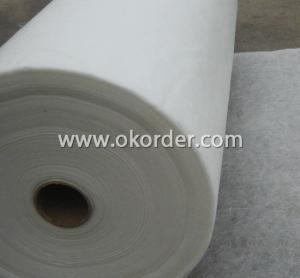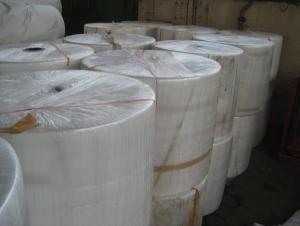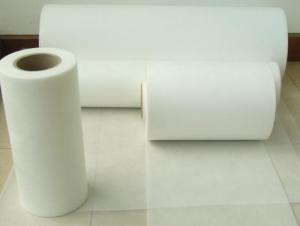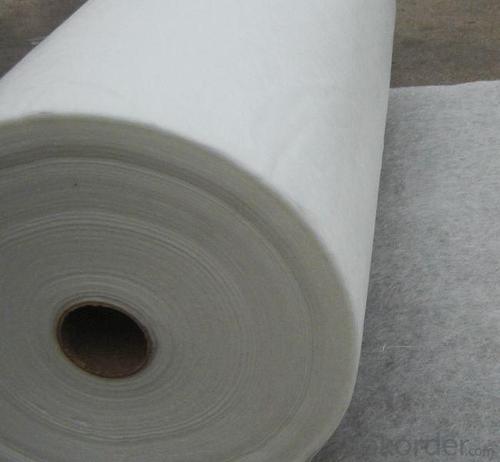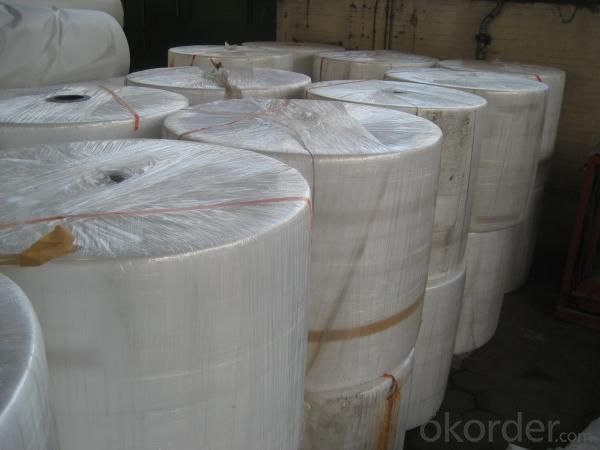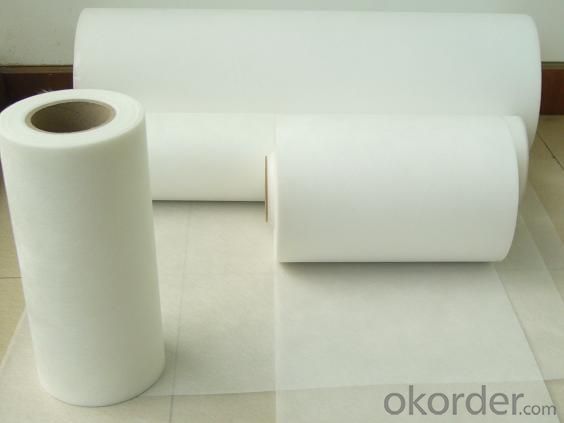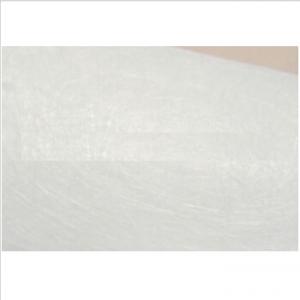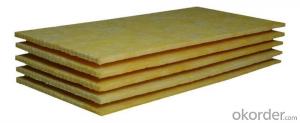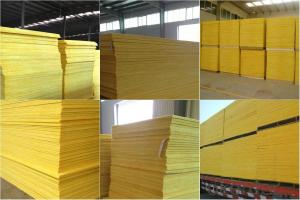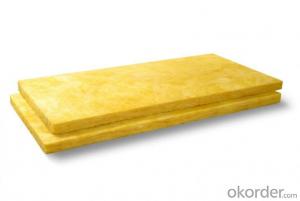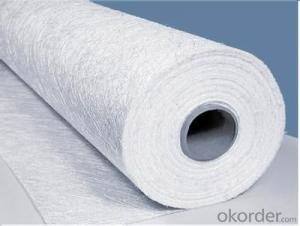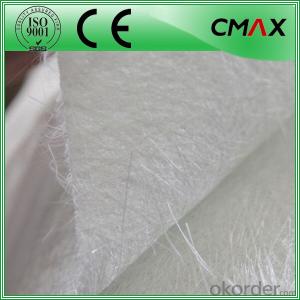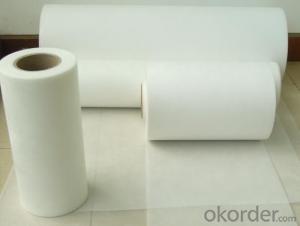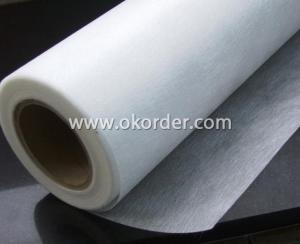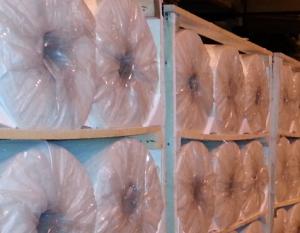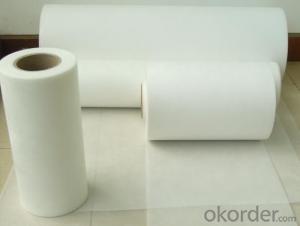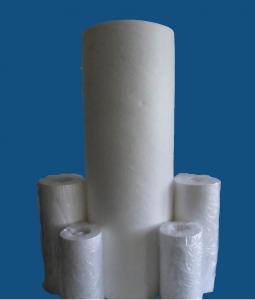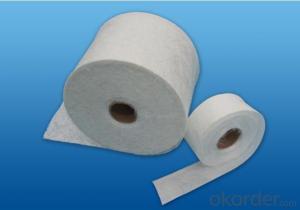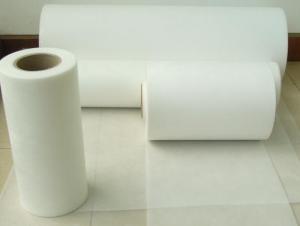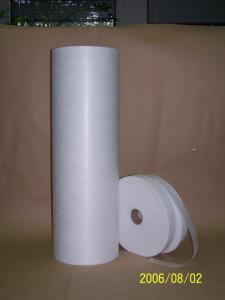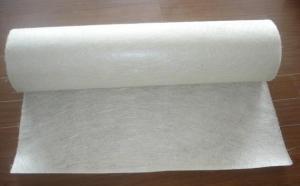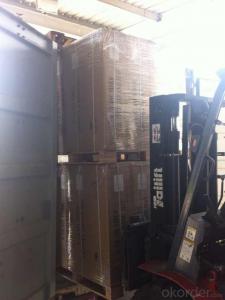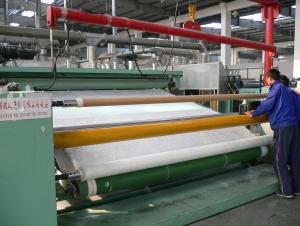Fiberglass Mat Tissue Mat
- Loading Port:
- China Main Port
- Payment Terms:
- TT or LC
- Min Order Qty:
- 2000Square Meter m²
- Supply Capability:
- 60000 Square Meter Per Month m²/month
OKorder Service Pledge
OKorder Financial Service
You Might Also Like
Packaging & Delivery of Tissue Mat
| Packaging Detail: | Carton |
| Delivery Detail: | 20Days |
Specifications of Tissue Mat
GSM: 20g/m2 to 280g/m2
Wdith: 1m to 2.1m
Max Roll Length: 3800m/Roll
Characteristics of Tissue Mat
It is made with water-dispersed chopped strands by wet technic and has being our strong product for export in the past decade. The width of finished product is 1m, 2m or 2.06m and length is 50m, 100m, 300m, 500m, 1500m, 2800m, 3600m, 3700m, or 3800m/roll. We also can cut it into the tape of width 30mm, 50mm, 100mm or 200mm and length 25m or 100m/roll. The area weight is 20g/m2, 25g/m2, 30g/m2, 45g/m2, 50g/m2, 60g/m2, 70g/m2, 80g/m2, 90g/m2, 100g/m2, 260g/m2 or 280g/m2.
As per clients’ application, we also can supply the following products.
1.fiberglass roofing tissue with or without 66 yarns (45g/m2, 50g/m2, 60g/m2, etc)
2.fiberglass surface tissue for FRP products
3.fiberglass tissue for pipe wrapping
4.PVC floor tissue (such as 40g/m2 x 2.06m width x 2800m/roll)
5.Fiber glass mat (CCL CEM-3 using)
6.AGM battery separator tissue
Meantime, we also can process some new products as per clients’ specical requirement, pls. see them as follows:
1.colorful tissue (yellow, red, blue, etc)
2.fiberglass tissue with one side coating of cement (the base tissue is 30g/m2~45g/m2 and coating is 15g/m2. The finished product is fire-proof and heat-resistant).
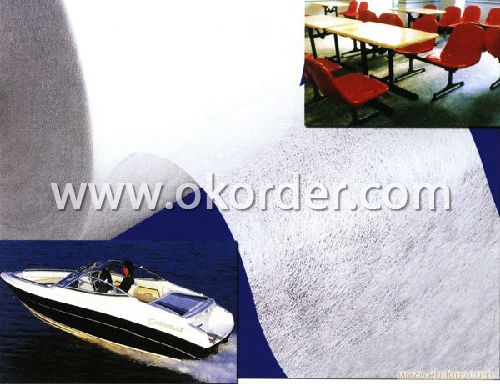
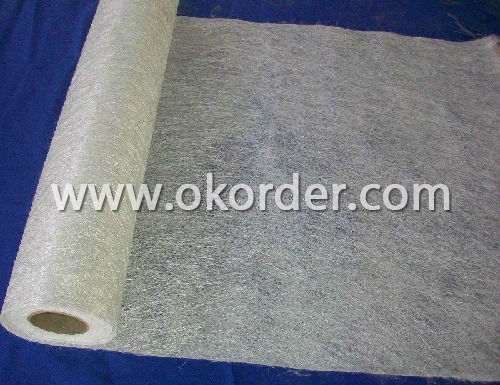
- Q: Does fiberglass mat tissue require any special handling precautions?
- Yes, fiberglass mat tissue does require special handling precautions. It is important to wear appropriate protective gear such as gloves, goggles, and a respirator when working with fiberglass mat tissue to prevent skin, eye, and respiratory irritation. Additionally, it is recommended to work in a well-ventilated area to minimize exposure to fiberglass particles.
- Q: How does fiberglass mat tissue perform in terms of acoustic insulation?
- When it comes to acoustic insulation, fiberglass mat tissue excels. Its fine fiber composition allows it to effectively absorb sound waves and minimize airborne noise transmission. The dense structure of the mat tissue enhances its soundproofing capabilities, making it a top choice for situations where noise control is essential. Furthermore, fiberglass mat tissue also boasts superior thermal insulation properties, further enhancing its acoustic insulation performance. In summary, this material is highly effective at reducing sound transmission and creating tranquil environments.
- Q: How is fiberglass mat tissue used in the production of sports equipment?
- Fiberglass mat tissue is used in the production of sports equipment as it provides strength, flexibility, and durability to the final product. It is commonly used as a reinforcement material in the manufacturing of sports equipment such as snowboards, surfboards, hockey sticks, and tennis rackets. The fiberglass mat tissue is typically layered with resin and other materials, forming a composite structure that enhances the overall performance and longevity of the sports equipment.
- Q: Can fiberglass mat tissue be used for waterproofing?
- Yes, fiberglass mat tissue can be used for waterproofing. It is commonly used as a reinforcement material in waterproofing systems, such as for roofs, walls, and foundations. The fiberglass mat tissue is impervious to water and helps to provide an additional layer of protection against moisture intrusion.
- Q: Can fiberglass mat tissue be used for repairing fiberglass kayaks?
- Yes, fiberglass mat tissue can be used for repairing fiberglass kayaks. Fiberglass mat tissue is a lightweight material that is commonly used in the repair and reinforcement of fiberglass products, including kayaks. It is designed to be easily moldable and conform to the shape of the damaged area. By applying the fiberglass mat tissue with an epoxy resin, it can effectively reinforce and bond the damaged sections of a fiberglass kayak, restoring its strength and durability. It is important to ensure that the damaged area is properly prepared and the fiberglass mat tissue is applied correctly to achieve a strong and long-lasting repair.
- Q: How does fiberglass mat tissue perform in terms of mold and mildew resistance?
- Fiberglass mat tissue demonstrates excellent resistance to both mold and mildew. The material is inherently moisture-resistant, which prevents the growth of mold and mildew. Additionally, fiberglass is non-porous and does not provide a suitable environment for these microorganisms to thrive. Furthermore, fiberglass mat tissue is often used in applications where moisture is present, such as in bathroom walls or showers, and it has proven to be highly effective in preventing the growth of mold and mildew. Overall, fiberglass mat tissue performs exceptionally well in terms of mold and mildew resistance, making it a reliable choice for applications where these concerns are prevalent.
- Q: Can fiberglass mat tissue be used for repairing fiberglass surfboards?
- Yes, fiberglass mat tissue can be used for repairing fiberglass surfboards. Fiberglass mat tissue is a commonly used material for repairing and reinforcing fiberglass structures, including surfboards. It is lightweight, flexible, and easy to work with, making it ideal for patching up cracks or holes in the surfboard's fiberglass shell. The mat tissue is typically applied with epoxy resin, which bonds the tissue to the surfboard's surface, creating a strong and durable repair. However, it is important to note that the success of the repair depends on the skill and technique of the person performing it. It is recommended to seek professional help or guidance if you are not experienced in surfboard repairs.
- Q: Can fiberglass mat tissue be used for insulation in power plants?
- Indeed, insulation in power plants can make use of fiberglass mat tissue. Renowned for its remarkable thermal insulation characteristics, this lightweight and pliable material serves as an effective thermal barrier in a multitude of applications, including power plants. By insulating equipment and pipelines, fiberglass mat tissue curbs heat dissipation, thereby bolstering energy efficiency and thwarting heat loss. Furthermore, given its non-combustible nature, fiberglass mat tissue emerges as an ideal option for insulation in environments where fire safety reigns supreme.
- Q: How does fiberglass mat tissue contribute to the strength and durability of composite materials?
- Fiberglass mat tissue plays a crucial role in enhancing the strength and durability of composite materials. Firstly, the mat tissue acts as a reinforcement component by providing additional strength and rigidity to the composite structure. The fibers within the mat tissue are typically made of glass, which has high tensile strength and stiffness. These fibers are randomly oriented, creating a three-dimensional network that distributes and transfers stress throughout the composite material. This network of fibers helps to resist cracks and fractures, thereby increasing the overall strength of the composite. Furthermore, the mat tissue also acts as a barrier against delamination, which is a common issue in composite materials. Delamination refers to the separation of layers within the composite, which can weaken its structural integrity. The fiberglass mat tissue prevents delamination by bonding the layers together and improving the adhesion between them. This increased adhesion reduces the likelihood of interface failure and enhances the overall durability of the composite material. Moreover, fiberglass mat tissue helps to improve the impact resistance of composite materials. The random fiber orientation within the mat tissue creates a crisscross pattern, which enhances the composite's ability to absorb and distribute impact energy. This characteristic makes the material less prone to damage from external forces, such as impacts, vibrations, or mechanical stress. In summary, fiberglass mat tissue significantly contributes to the strength and durability of composite materials through reinforcement, delamination prevention, and enhanced impact resistance. Its unique characteristics and properties make it an essential component in various industries, including automotive, aerospace, construction, and marine, where the need for strong and durable materials is crucial.
- Q: Is fiberglass mat tissue suitable for insulation in pharmaceutical plants?
- Fiberglass mat tissue is not typically suitable for insulation in pharmaceutical plants. Pharmaceutical plants require insulation materials that meet specific requirements, such as being non-porous, non-shedding, and resistant to moisture and chemicals. Fiberglass mat tissue is a porous material and may shed fibers, which can contaminate the pharmaceutical production environment. Additionally, it may not provide adequate resistance to moisture and chemicals, which are common in pharmaceutical plants. It is recommended to use insulation materials that are specifically designed and certified for pharmaceutical applications to ensure they meet the necessary standards and regulations for insulation in these sensitive environments.
1. Manufacturer Overview
| Location | Hebei,China |
| Year Established | 2008 |
| Annual Output Value | Above US$20 Million |
| Main Markets | Mid East;Western Europe:South Asian |
| Company Certifications | ISO9001:2000;ISO14001:1996;GB/T28001:2001 |
2. Manufacturer Certificates
| a) Certification Name | |
| Range | |
| Reference | |
| Validity Period |
3. Manufacturer Capability
| a) Trade Capacity | |
| Nearest Port | Tianjin |
| Export Percentage | 80% |
| No.of Employees in Trade Department | 350 People |
| Language Spoken: | English;Chinese;Korean |
| b) Factory Information | |
| Factory Size: | Above 100,000 square meters |
| No. of Production Lines | Above 12 |
| Contract Manufacturing | OEM Service Offered;Design Service Offered |
| Product Price Range | Average |
Send your message to us
Fiberglass Mat Tissue Mat
- Loading Port:
- China Main Port
- Payment Terms:
- TT or LC
- Min Order Qty:
- 2000Square Meter m²
- Supply Capability:
- 60000 Square Meter Per Month m²/month
OKorder Service Pledge
OKorder Financial Service
Similar products
Hot products
Hot Searches
Related keywords
